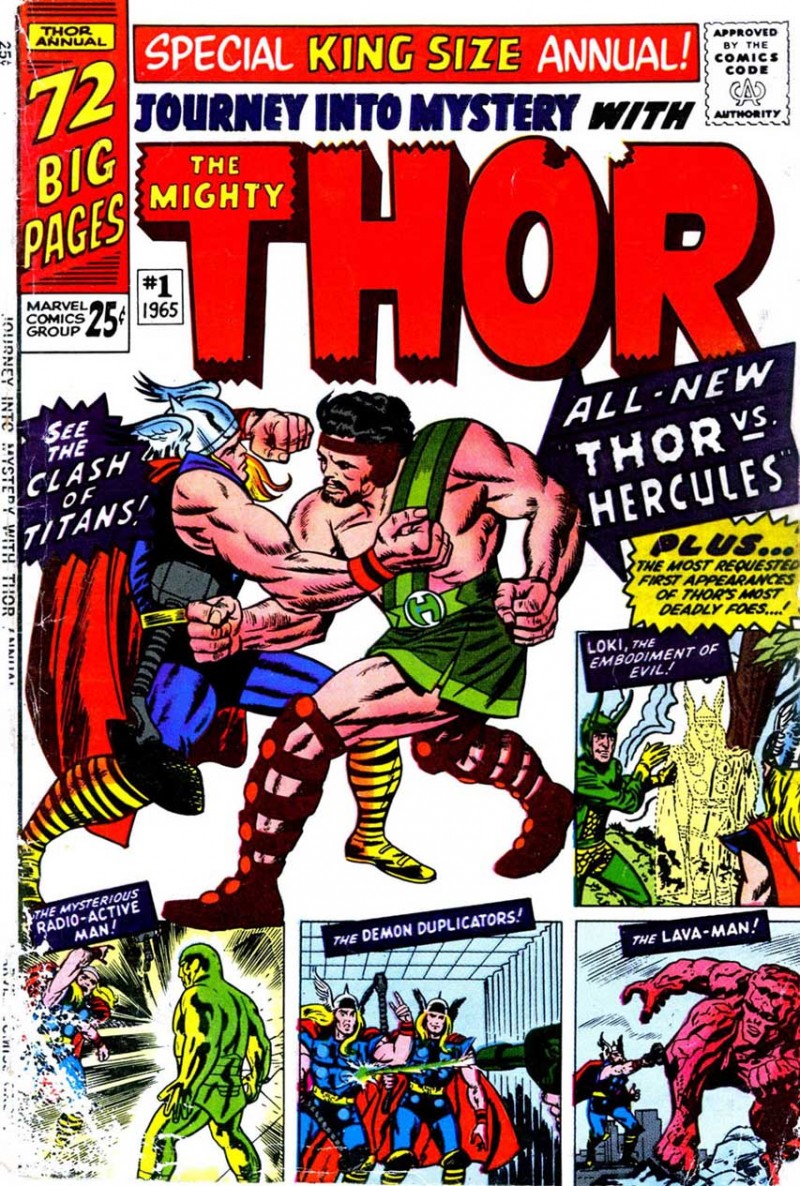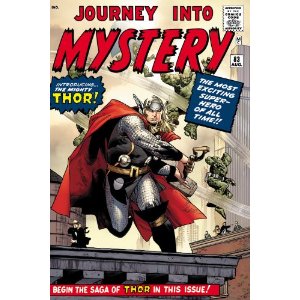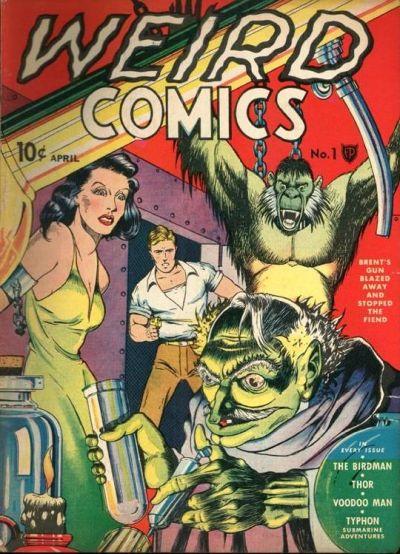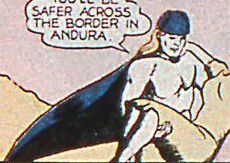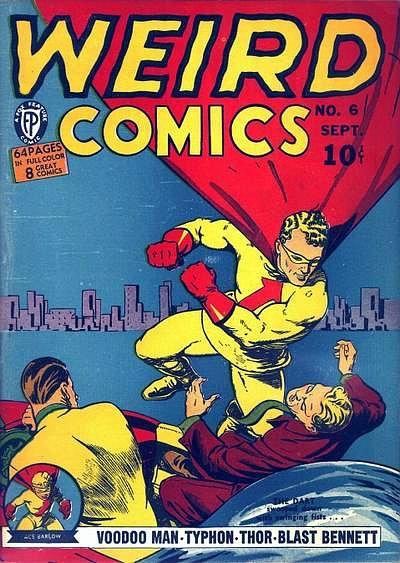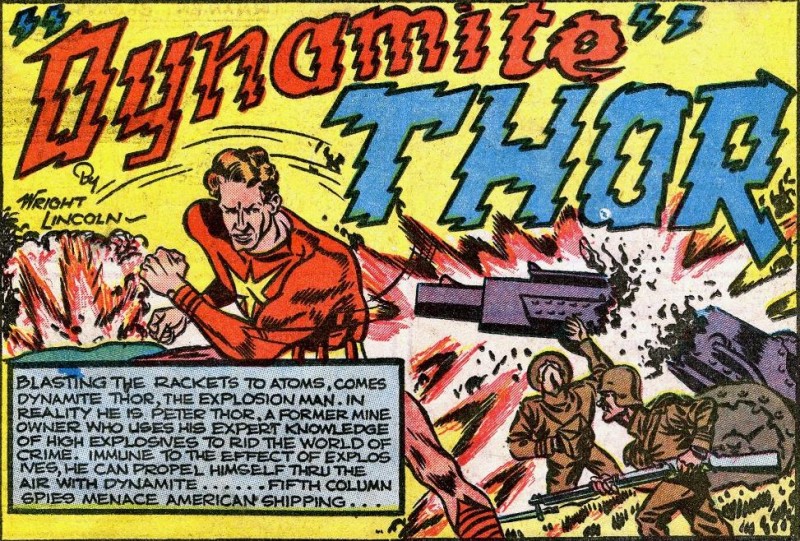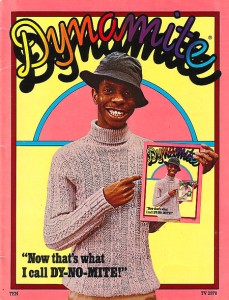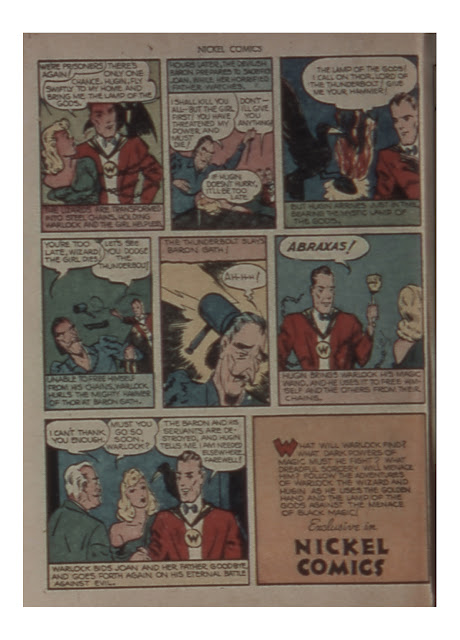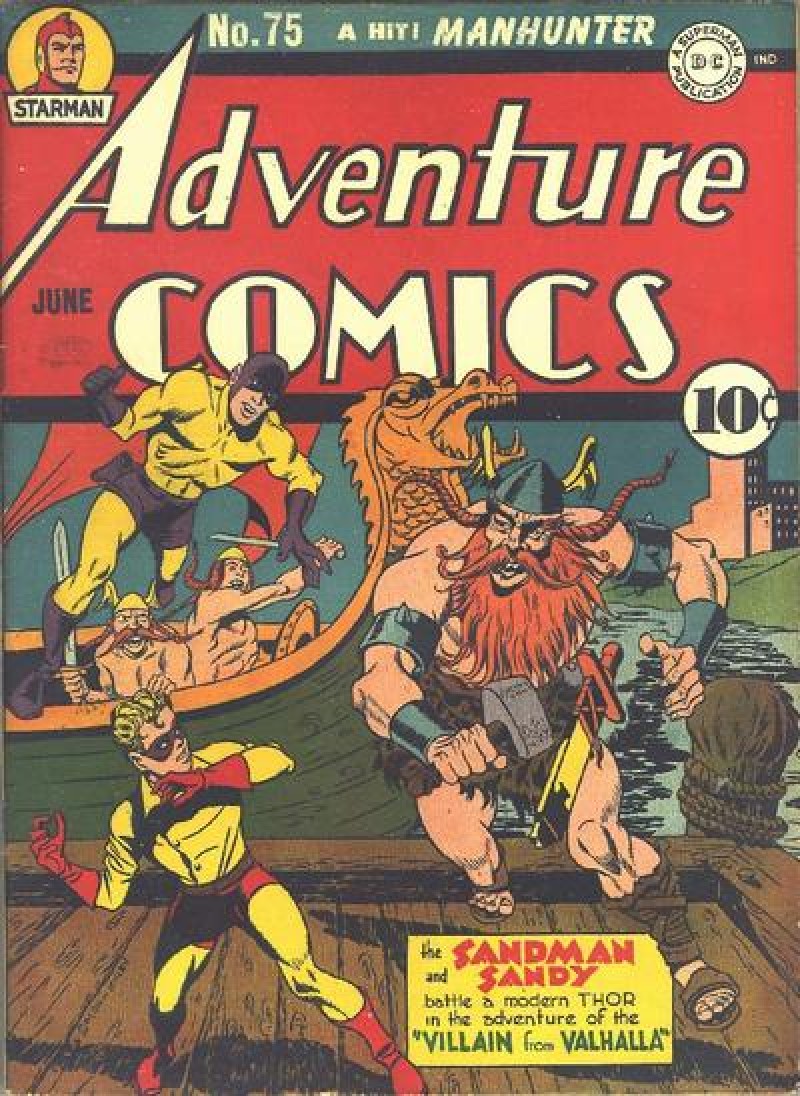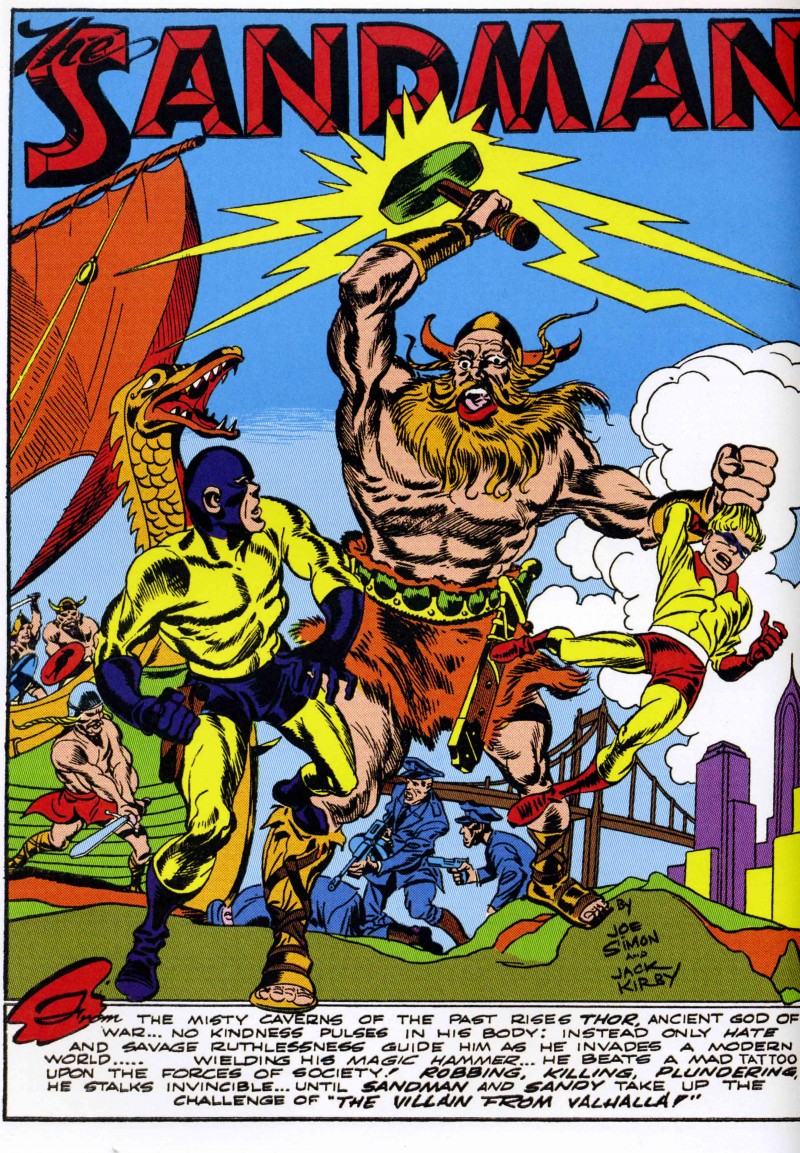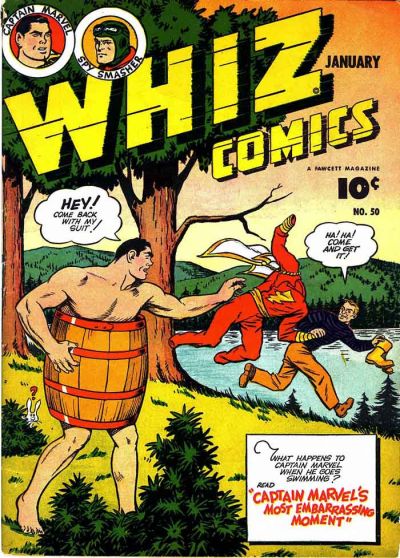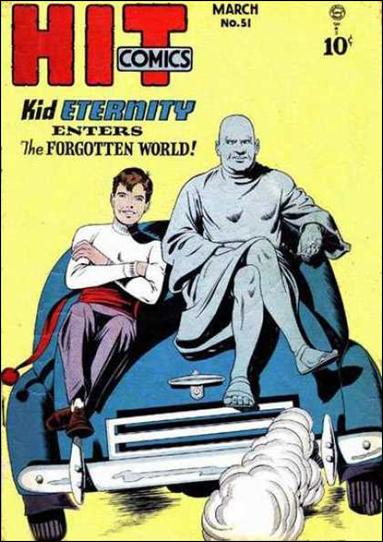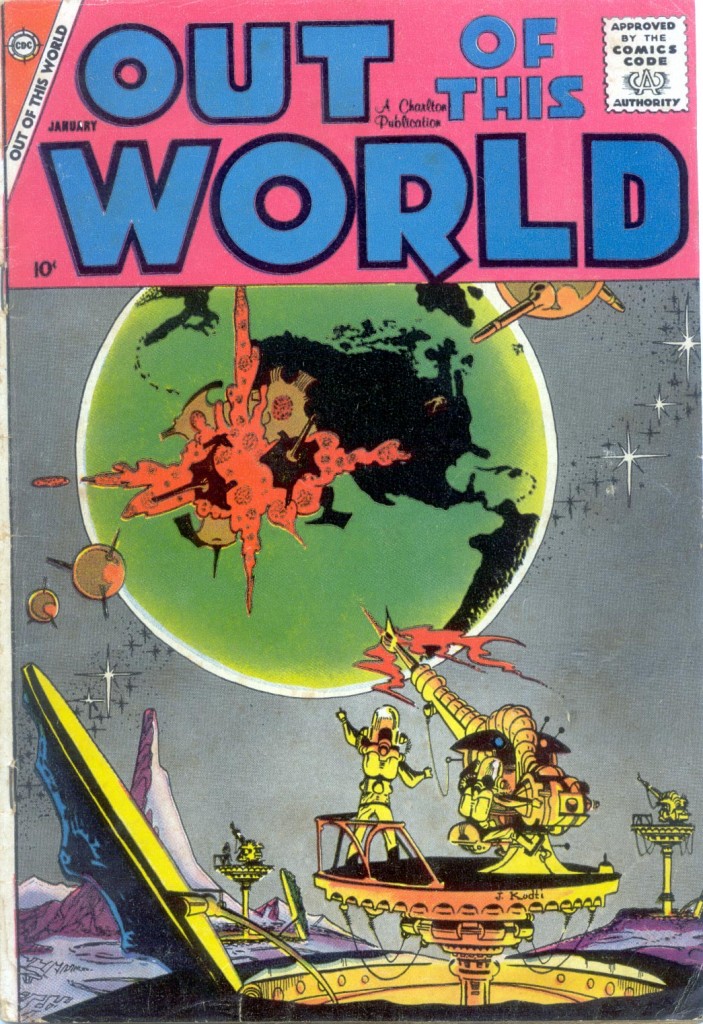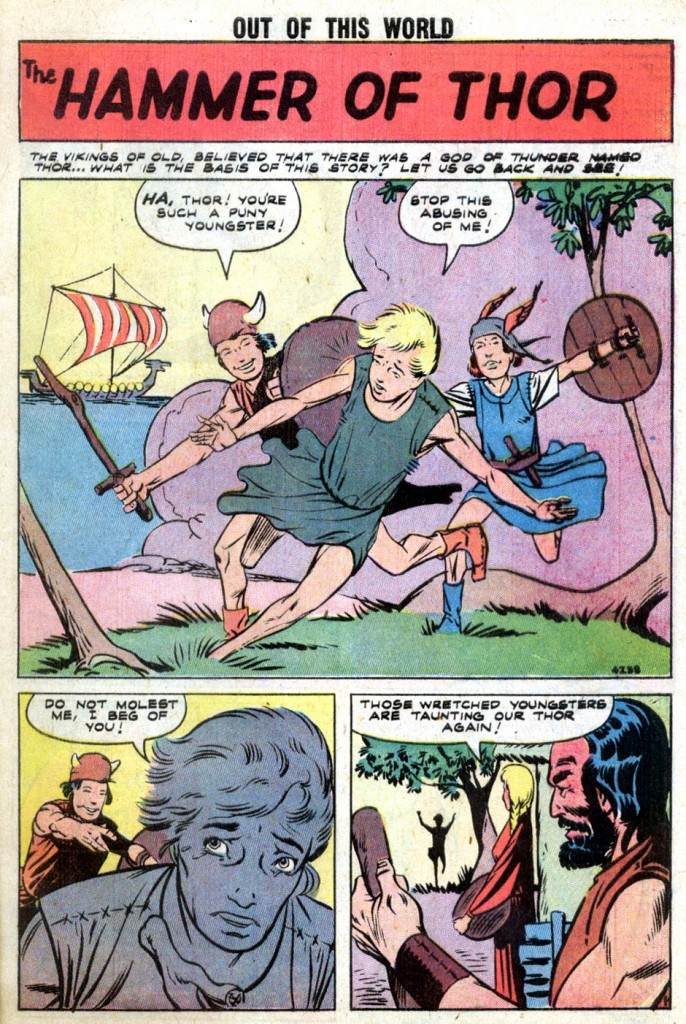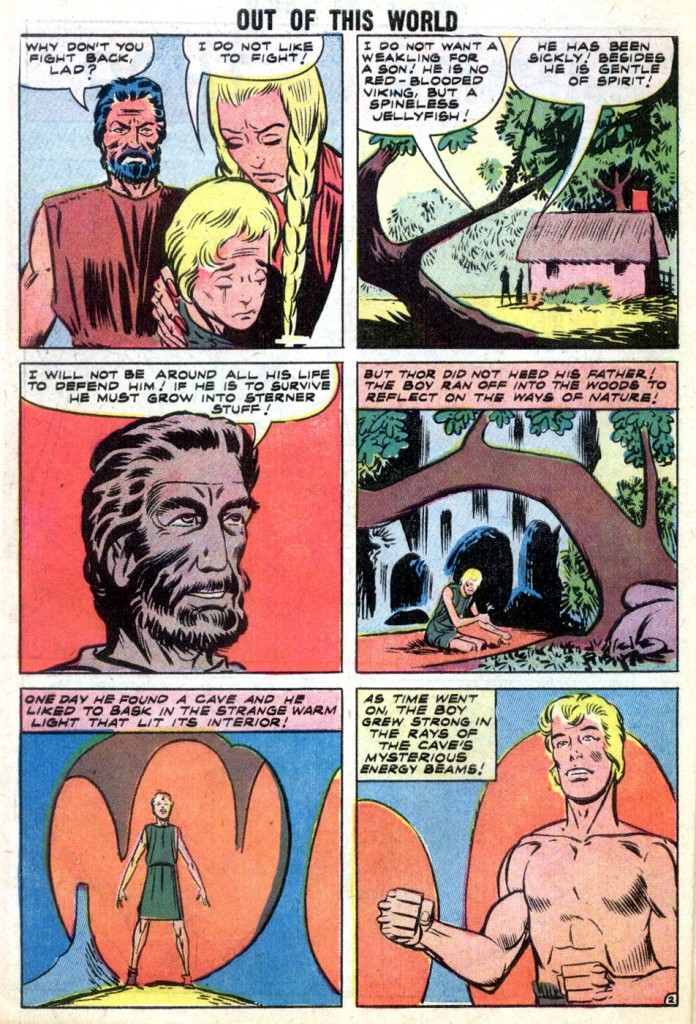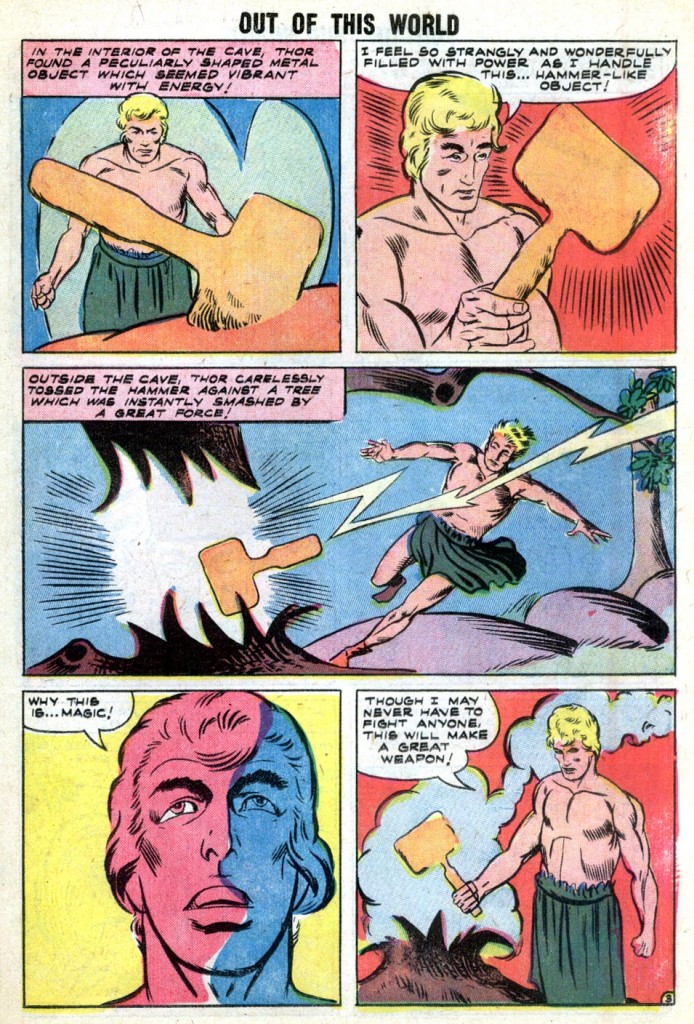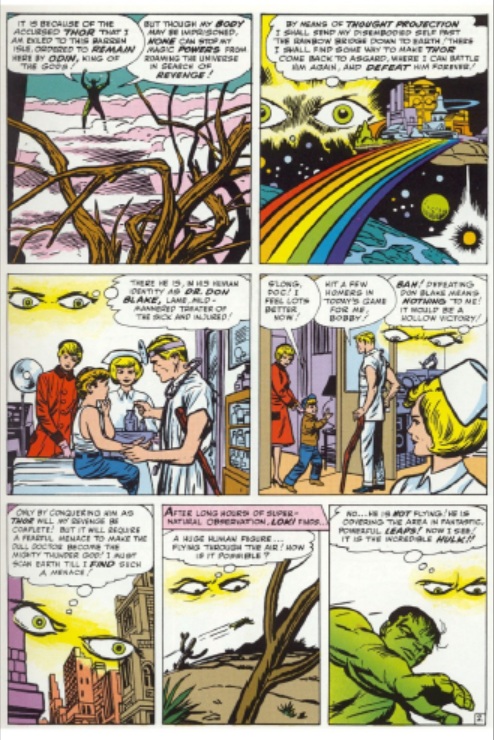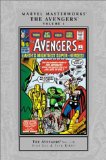Here I continue my contemplation of the age-old question, “Who was the first Avenger?” (Actually the question is only a few posts old, but who’s counting?) If we’re using age as a measure of the first Avenger, Thor has a claim to the title. Captain America might have been the first Avenger to have his own Marvel comic book, but Thor was not only on the comic book scene before Cap, he was around before comic books–and even before paper!
The First Avenger to Be Mentioned by an Ancient Roman Historian
Archaeological relics that possibly allude to Thor may date even earlier, but the first literary references to Thor come from the Roman historian Tacitus, who lived in the 1st century AD. Tacitus recorded early encounters between the Roman legions and the Germanic tribes, and his Germania became the first written documentation of Germanic mythology–and of Thor.
Tacitus described a tribe who worshipped Odin, whom he equated with the Roman god Mercury, in turn the Roman equivalent of the Greek Hermes. Tacitus mentioned that the same tribe also offered sacrifices to Thor, whom he equated with Hercules, the Roman version of the Greek Heracles.
This association of Thor with Hercules seems to have been widespread throughout German areas of the Roman Empire, as evidenced by Latin inscriptions to Hercules found on German coins and other objects from the Roman period. Thor and Hercules would continue to travel together through the millennia, to come together again nineteen centuries later in Journey into Mystery Annual #1.
The Mighty Thor Omnibus, Vol. 1
The First Avenger to Be Demythologized
Stories about Thor endured through Viking times to resurface in the 13th-century Icelandic literary renaissance. Snorri Sturlson’s Prose Edda and the anonymous Poetic Edda recorded the first detailed accounts of Thor’s adventures, setting down the basis of modern Thor mythology. (Incidentally, for those interested in a good introduction to traditional Thor stories, I highly recommend the beautifully illustrated children’s classic D’Aulaires’ Book of Norse Myths, long out of print but recently reissued.)
Sturlson, who was an educated Christian familiar with Greek literature, reinterpreted Thor in accordance with the method of the ancient Greek mythographer Euhemerus. Euhemerus claimed that the Greek gods were exaggerated versions of historic kings and heroes. Applying this principle, Sturlson reinterpreted Thor as a human descendant of the Trojan king Priam and the Trojan War hero Memnon, a warrior equal to Achilles. According to Sturlson, Memnon married Priam’s daughter Troan, and their son Tror–“we call him Thor,” Sturlson explains–became the king of the Thracians, a tribe of Central and Southeastern Europe. Tror then married a prophetess named Sibyl, “whom we call Sif,” and their Thracian offspring became the ancestors of the Germanic tribes. Sturlson added that the historic Odin and Frigg were actually descendants of the historic Thor.
Later on in his Edda, however, Sturlson departed from this euhemerist retelling of Norse mythology to record a more traditional account of Odin’s origins. (Sturlson thus became the inventor of ret-conning.) In this alternate version, Odin is a descendant of one of three cosmic gods sprung from the primordial universe, and Thor is the son of a marriage between Odin and the earth goddess.
This same tension between divine and euhemerist versions of Thor’s origins would resurface in Marvel Comics. The Asgardians and Olympians were originally portrayed as traditional gods. But after Kirby grew fascinated with “ancient astronaut” concepts like the Inhumans, the Kree, and the New Gods, Marvel’s gods were reinterpreted as super-evolved aliens who once fought the Celestials for ownership of Earth. Don Blake’s relationship to Thor would also change over time, with Blake starting off as Thor’s full-fledged alter ego but eventually being reduced to a mere myth himself.
The First Avenger to Be Remythologized
Traditional myths naturally made for more colorful stories than their euhemerized counterparts, and it was the more dynamic version of Thor’s exploits that spawned modern Thor mythology. Thor myths passed into modern European folklore, to be recorded by 19th-century scholars like Thomas Bulfinch and Jacob Grimm. By the early 20th century, Thor’s fame was widespread enough that in April 1937 the radio horror show The Witch’s Tale featured an episode called “The Statue of Thor,” where the feud between Thor and Loki spills over to a pair of human counterparts.
The First Avenger to Appear in a Golden Age Comic
Thor beat Captain America into the comic books by almost a year. Eleven months before Cap’s March 1941 premiere, Fox Features Syndicate introduced Thor, God of Thunder in the premiere issue Weird Comics, published in April 1940.
The story was written by an unknown author and drawn by Pierce Rice, who had briefly worked for Iger’s studio in 1939 before starting his own studio with Arturo and Louie Cazeneuve. In Fox’s version, the original Thor chose a human successor to fight evil by sending a lightning bolt to transfer his powers to electrical scientist Grant Farrel. From then on, whenever Farrel called on Thor, a lightning bolt would strike, giving him the power to fly, control storms, and throw his hammer Mjolnir like a boomerang with tank-smashing force.
Of course, lightning had been empowering Captain Marvel at Fawcett since Whiz Comics #2 in February 1940, so Fox’s Thor was nothing new. By the publication of issue #6 of Weird Comics in September 1940, Thor, God of Thunder had given way to a new character called Dynamite Thor, the Explosion Man. (Somehow I can’t type that without thinking of Jimmie Walker saying it aloud.) Created by Wright Lincoln, Dynamite Thor was the alter ego of Peter Thor, a demolitions expert who used his knowledge to fight crime and spies.
Meanwhile, Fawcett had introduced Thor–at least by name–in the May 1940 premiere of Nickel Comics. The allusion appeared on the last page of the issue, in the last panel of a backup strip by Captain Marvel co-creator Bill Parker. The strip introduced the magical superhero Warlock the Wizard, last of the White Magicians. While battling the sorcerer Baron Gath, Warlock loses his main magical weapon. As a last resort, he retrieves a backup device called the Lamp of the Gods to call upon Thor and borrow his hammer, with which he proceeds to bonk the Baron.
Thor also received a brief mention in the November 1940 premiere of Wham Comics, published by Centaur Publications. The issue featured a 10-page story written and drawn by Eddie Robbins, called “Craig Carter and the Magic Ring.” After Carter saves the life of an Egyptian named Aben Toumaj, Toumaj gives him a ring with the power to command the Greek gods and Thor. Carter uses the ring to fight crime. Carter’s adventures lasted one more month before Wham Comics folded.
In June 1942 DC featured a villainous version of Thor in Adventure Comics 75, where “the Villain from Valhalla” squared off against Sandman and Sandy. Here Thor was depicted by Joe Simon and Jack Kirby, in Kirby’s first rendition of the Thunder God. Simon and Kirby gave Thor red hair, which was in keeping with traditional descriptions of Thor (though it should be noted that in German writers of the late 19th and early 20th century such as Nietzsche, “blonde” could include red hair, so these were not actually mutually exclusive).
(Thanks to Barry for reminding me of this issue and providing the interior splash page image!)
Fawcett introduced another version of Thor in January 1944. Whiz Comics #50 featured a backup Ibis the Invincible story by Otto Binder called “Loki, the Terrible,” where Ibis crossed paths with Thor and the Fenris Wolf while battling Loki.
Thor’s name was invoked again by Quality Comics in Hit Comics #51 in March 1948. This time he was summoned by Kid Eternity, who possessed the power to summon any good person or animal from history or mythology by saying the word “Eternity”.
The First Avenger to Be Thawed Out for the Silver Age
While Captain America was still thawing out of the Cold War, Thor was first summoned into the Silver Age by none other than Steve Ditko, along with an uncredited author. Ditko drew a Thor story in January 1959 for Out of This World #11, published by Charlton. In the story, a bullied Viking boy named Thor retreats into nature. He wanders into a cave, where he finds a mysterious light that makes him strong and a magic hammer that smashes trees when thrown. Armed with his new powers, Thor helps his fellow Scandinavians fend off Hun invaders. He then retreats back into nature and mysteriously disappears, but his legend survives into modern times–to the dawn of the Marvel Age.
The First Avenger to Be Targeted by Loki in Avengers #1
Three years after Ditko’s Charlton Thor story, Thor emerged again from a cave in Journey into Mystery #83, this time not defend Scandinavia against the Huns, but to defend the United States and the entire Earth against an alien menace. Not to be outdone by aliens, Loki then renewed his ancient vendetta against his half-brother. In the process, he unwittingly provided the motive for the formation of the Avengers.
While Hulk was the first Avenger actually attacked by Loki in The Avengers#1, the motive for the attack was to get at Thor. Loki deemed defeating Don Blake an unworthy revenge, and decided instead to frame the Hulk as a menace in order to motivate Blake to become Thor. Hulk became Loki’s pawn in an endgame to get Thor. In this sense Thor became the rallying point for the assembly of the Avengers.
Marvel Masterworks: Avengers, Vol. 1
The First Avenger to Babysit
After helping found the Avengers, Thor generally took a supporting role, and he tended to follow other team members in crossing over into other media. When The Marvel Super Heroes cartoon premiered in September 1966, Thor’s slot aired on Thursday (naturally–Thor is the only Avenger to have a day of the week named after him), following Captain America on Monday, Hulk on Tuesday, and Iron Man on Wednesday.
Thor then followed Hulk over into live-action TV, guest starring in the 1988 TV movie The Incredible Hulk Returns.
By this time, however, Thor had already acquired one undisputed distinction that set him apart from his teammates. In the 1987 film Adventures in Babysitting, one of the protagonists is a little girl named Sara who idolizes the Marvel Thor and runs around wearing a plastic Thor hat. Towards the end of the movie, she and her brother and their babysitter are trying to escape from some criminals when they run into a Thor lookalike named Dawson, played by the versatile Vincent D’Onfrio (better known today from Law & Order. Dawson initially refuses to help, but gives in to his repressed heroic instincts when Sara gives him her hat. Thor thus became the first Avenger to babysit.
